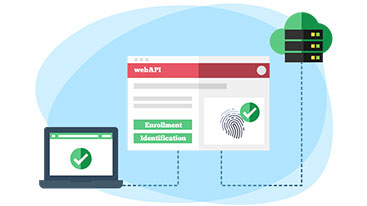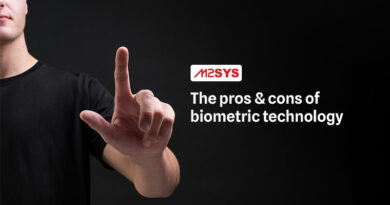What are the different types of biometric technology?
In the past, most of the government organizations, public and private companies were using paper-based sign-in/sign-out system to identify employees, contractors, visitors, etc. The paper-based system is obsolete now and replaced with biometric system. Introduction of different types of biometric technology within organizations brings about a highly responsible security system and attendance maintenance solution without significantly increasing the budget. People from various verticals welcomed different types of biometric technology with open arms because of its high level of accuracy and efficiency in preventing identity theft and maintaining employees and visitors attendance records.
Since IDs and passports can be forged, different types of biometric technology not only meets the expectation but also it has exceeded it. Biometric technology is more sophisticated, cleverer, super sensitive and put in place to help protect companies and individuals. Most importantly it is impossible to steal or duplicate as the name suggests biometrics works on biological characteristics of an individual. An individual has two types of biological traits: behavioral and physical.
Behavioral Biometrics:
Behavioral biometrics is mostly used for verifying an individual. It can be divided into two types: keystroke recognition and speaker identification.
Keystroke Recognition:
It is highly useful for reducing fraudulent activities like inappropriate email and unethical typing. Because keystroke recognition as the name suggests measures the person’s typing patterns. Computers using keystroke recognition software can identify the improper activities and pushes the message to the right people for them to take proper action.
Voice Recognition:
This types of biometric technology measure an individual’s voice patterns, speaking style, and pitch. It is helpful to find out unknown speaker’s identity thus minimizing threats over phone calls, internet calls, etc.
Physical Biometrics: Physical biometrics is used in identifying and verifying individuals. Physical traits of a human being are so distinct from another that it is impossible to commit crimes like identity theft. There different types of environmental biometric technology and they are briefly discussed below:
Fingerprint identification:
One of the oldest forms of identification method is fingerprint identification. Its use can be seen widely. From accessing offices to unlock a mobile device, fingerprint identification is the cheapest method and the safest. Fingerprints of different individuals are not the same. Reports suggest that one in a billion can be matched using prints. Like all the other biometrics technology, it identifies and verifies a person’s fingerprint with data saved in it beforehand. Law enforcement agencies, hospitals, and clinics, schools and colleges, gym and fitness centers have adopted the technology to identify and verify individuals rightfully.
Finger Vein Identification:
This identification method uses the underneath surface of an individual’s finger. It is found out that every individual’s vein pattern is unique and cannot be matched with others. Finger vein identification is a highly secure method as it is beneath the finger surfaces thus cannot be destroyed or modified.
Palm Vein Authentication:
Back in 2016, a Japanese Ogaki Kyoritsu Bank has adopted palm vein technology to authenticate all its customers due to its highly responsible security and supersensitivity. It is similar to fingerprint analysis. A camera takes the photo and studies palm prints and other physical traits to uniquely identify a person’s palm.
Iris Recognition:
One of the most popular types of biometric technology is iris recognition. It is trending security means in banks and other financial sectors because of its narrow margin of error and fast speed. Iris, an organ can be found in human eyes, remains in a stable structure all throughout life. An iris recognition device utilizes pattern recognition techniques based on high resolution and distortion-free images of the irises and stores the data for future errorless identification and verification.
Face Recognition:
Once only security sectors are associated with this technology, but now other industries including retail, marketing, and health have adopted the technology with open arms as well. Last year Apple’s iPhone X introduced Face ID which uses faceprint mapped by the phone’s camera. Now a facial recognition device can plan an individual’s facial features mathematically and store the data as a faceprint for future identity verification. For identification, a facial recognition matching system is used.













I think fingerprints are the most suitable biometric identifiers for many industries and Most people are familiar with this authentication method. They are also very cheap and with M2SYS turnkey solutions they are even easier to deploy within minutes. Good work guys!